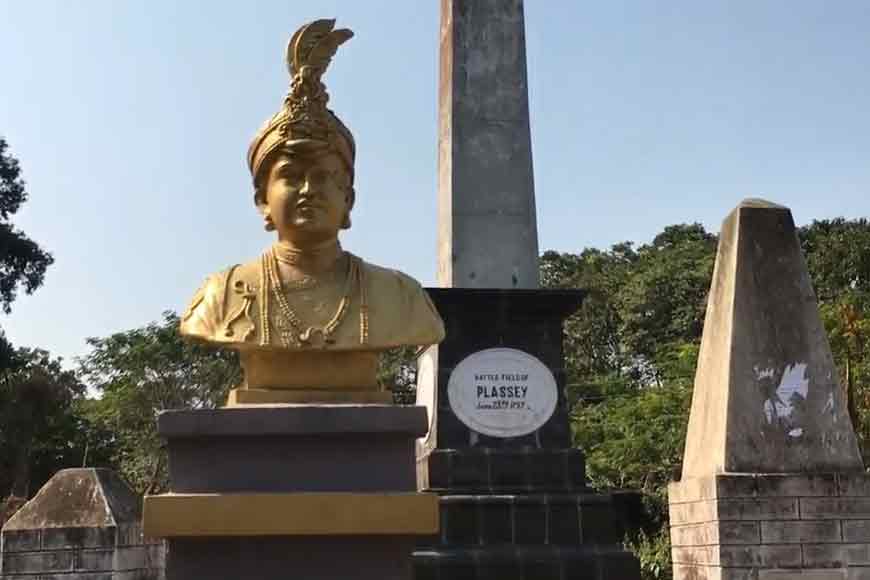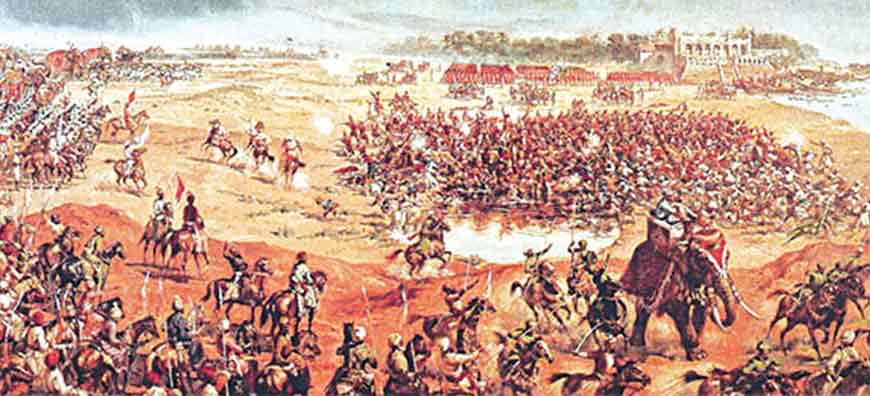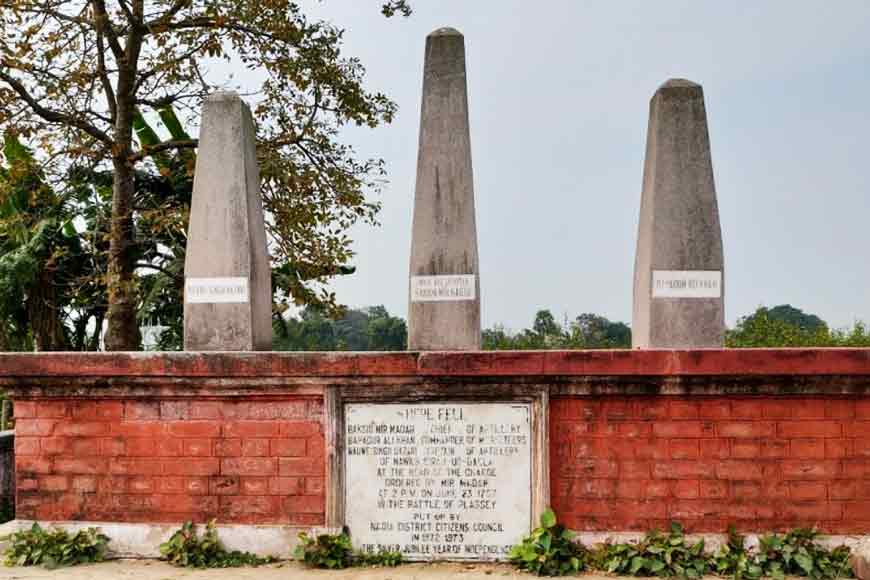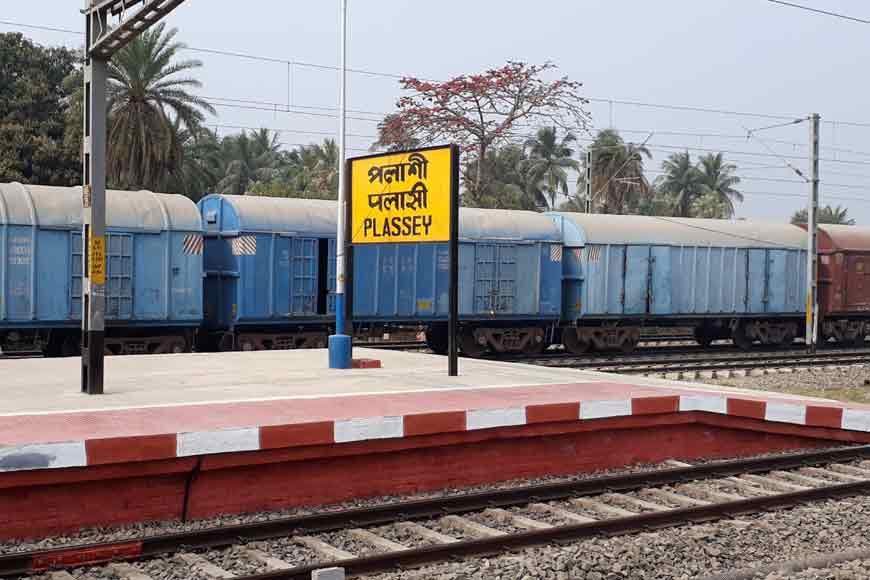The nondescript Palashi, which once altered the history of India!

In a clearing amidst mango orchards and fields stands a golden coloured statue. The subject of the statue is the last autonomous nawab of Bengal, Siraj-ud-Daulah, whose defeat in 1757 at the hands of the British set in motion a chain of events that would eventually lead to the colonisation of the whole of India. Today, the battle in which Siraj was defeated is still known as the Battle of ‘Plassey’, the anglicised version of the original Palashi, the small village on the east bank of the Bhagirathi river, about 50 km from Krishnanagar, in what is Nadia district today.

At first glance, the renowned battlefield seems fairly nondescript. Indeed, it looks like little more than a field and a modest sized mango orchard, rather than the theatre of war which changed the course of Indian history. However, as you walk around the field, it is easy to imagine the thundering of cannons, the screams of the dying and injured, the tumultuous confusion of battle between the British East India Company’s private army and the nawab’s forces.
For many, it comes as a surprise to know that Plassey is not in Murshidabad district, considering the latter was the capital of Bengal before Calcutta was accorded the honour. Roughly 155 km from Kolkata and 50 km from Murshidabad, this is an excellent location from which to begin a larger tour of Bengal’s former capital.
Also read : The Jagat Seth House, once Bengal's central bank
The name Palashi derives from the Bengali word ‘palash’, for a distinctive, red-flowered tree. The village has a total population of approximately 20,000 and is connected to Kolkata by both train and bus. Parts of the original battlefield have been swept away as the Bhagirathi has changed course over the centuries, but the Palashi Memorial is still very much worth a visit, comprising shrines, obelisks and memorials to the fallen generals and soldiers of Siraj-ud-Daulah, apart from the statue of Siraj mentioned at the very beginning.

Three obelisks mark the spots where Mir Madan (chief of artillery), Bahadur Ali Khan (commander of musketeers) and Nauwe Singh Hazari (captain of artillery) were killed in the battle. An inscription on a plaque states that they fell during an artillery charge led by Mir Madan, at around 2.00 p.m. on June 23. The general was eventually buried at the tomb of Farid Shah, about 5 km from Plassey.
How deep the Battle of Plassey is embedded in both the Indian and British psyches is evident from the fact that in Ireland’s County Clare, an estate owned by Robert Clive - the architect of the British victory - was renamed ‘Plassey’ in order to commemorate the famous win. Also, at the nearby University of Limerick, the original office of the president was named Plassey House in the late 18th century, and the building continues to serve the university today.

Why not visit such an important location for yourself? Once you’re done here, travel onward to Murshidabad and stay at the West Bengal Tourism Development Corporation’s Bohor Tourism Property (earlier Baharampur Tourist Lodge), which will serve as an excellent base for your tour of Murshidabad, which bore the brunt of the aftermath of Plassey. But that tour is another story.










